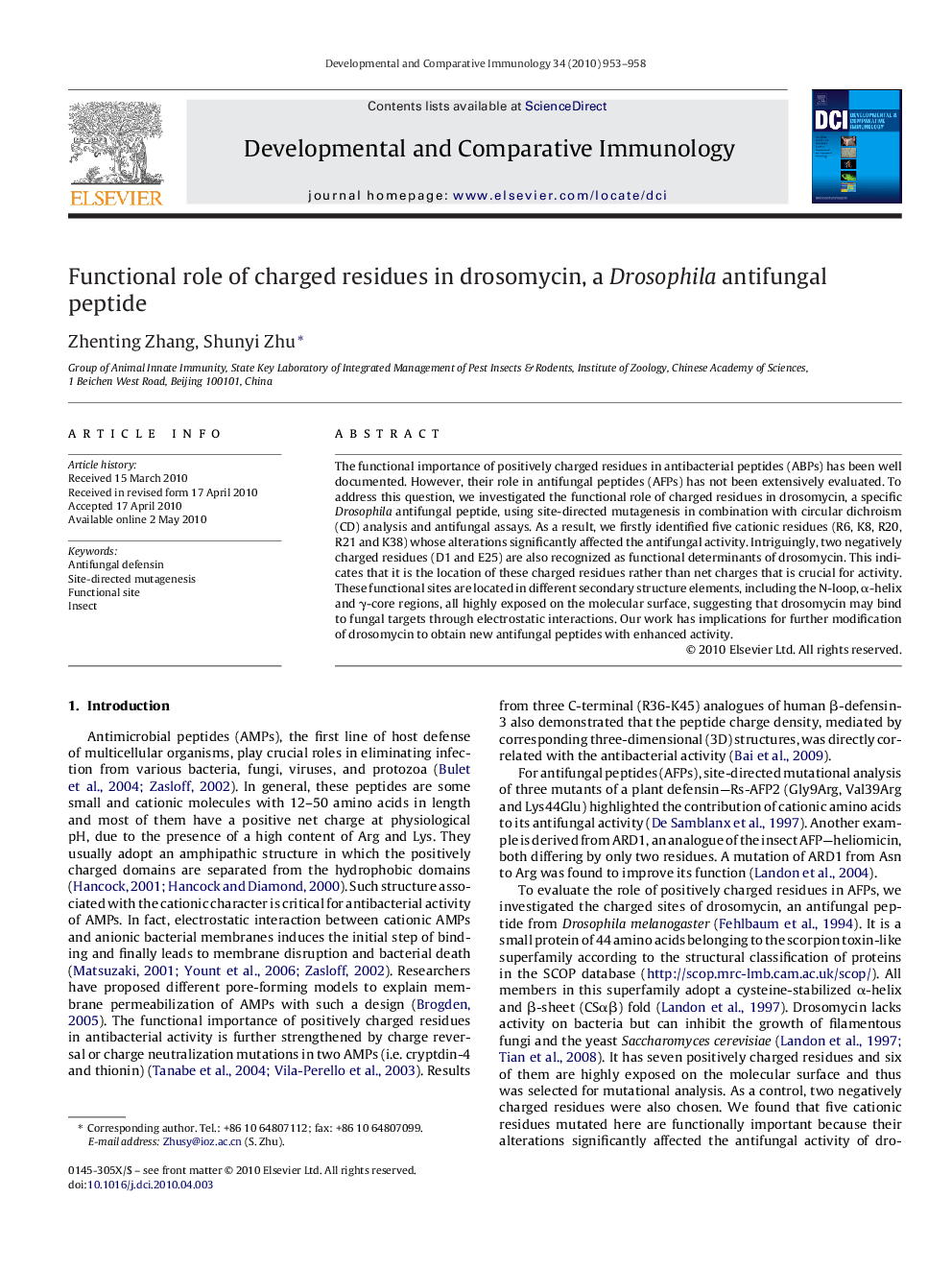| کد مقاله | کد نشریه | سال انتشار | مقاله انگلیسی | نسخه تمام متن |
|---|---|---|---|---|
| 2429633 | 1106510 | 2010 | 6 صفحه PDF | دانلود رایگان |

The functional importance of positively charged residues in antibacterial peptides (ABPs) has been well documented. However, their role in antifungal peptides (AFPs) has not been extensively evaluated. To address this question, we investigated the functional role of charged residues in drosomycin, a specific Drosophila antifungal peptide, using site-directed mutagenesis in combination with circular dichroism (CD) analysis and antifungal assays. As a result, we firstly identified five cationic residues (R6, K8, R20, R21 and K38) whose alterations significantly affected the antifungal activity. Intriguingly, two negatively charged residues (D1 and E25) are also recognized as functional determinants of drosomycin. This indicates that it is the location of these charged residues rather than net charges that is crucial for activity. These functional sites are located in different secondary structure elements, including the N-loop, α-helix and γ-core regions, all highly exposed on the molecular surface, suggesting that drosomycin may bind to fungal targets through electrostatic interactions. Our work has implications for further modification of drosomycin to obtain new antifungal peptides with enhanced activity.
Journal: Developmental & Comparative Immunology - Volume 34, Issue 9, September 2010, Pages 953–958